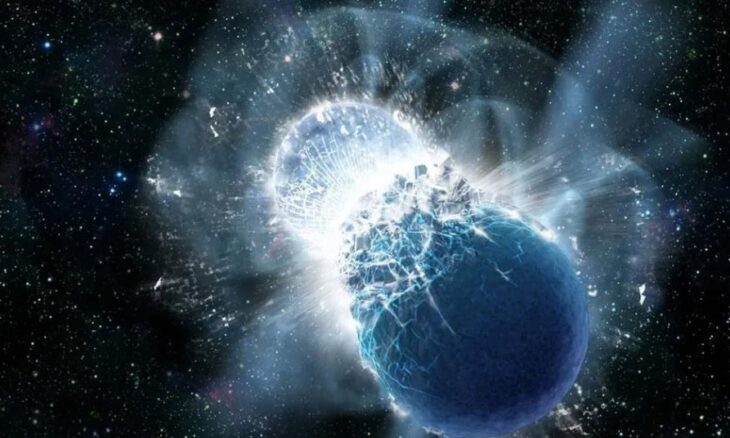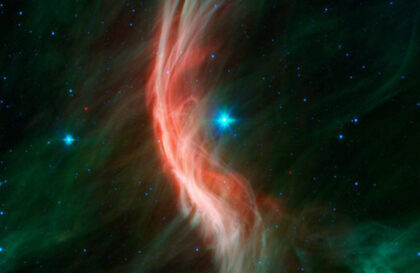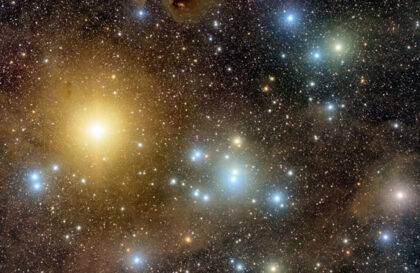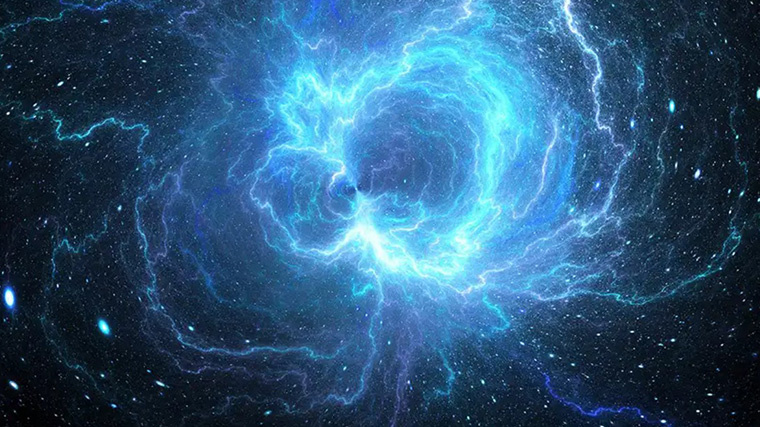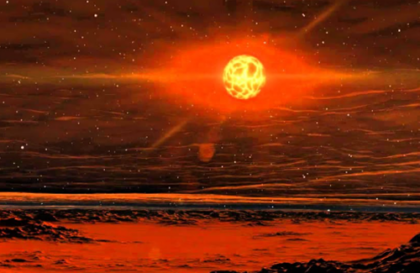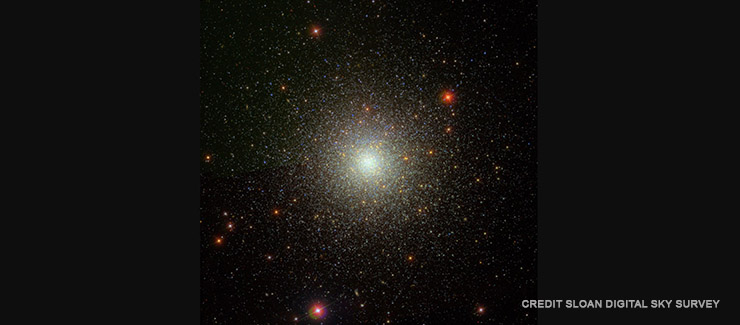After a supernova explosion, an incredibly dense astronomical object is formed. Its mass exceeds the mass of the Sun, but the radius is only about 10 kilometers.
This is a neutron star. Its density is because the star’s core is collapsing under the influence of gravity, causing protons and electrons to combine to form neutrons, which are tightly packed together.
A neutron star’s formation depends on the original star’s mass. If the star’s core is less dense, it will become a neutron star, while a denser core will lead to the formation of a black hole. However, there is a theoretical limit to the mass of a neutron star beyond which it will collapse into a black hole. This limit is believed to be about 2.5 times the mass of the Sun.
Formation of black holes
The spectacular merger of two neutron stars generated gravitational waves and created a black hole. This newly emerged black hole will be the lowest mass black hole ever discovered. Credit: CXC/M. Weiss; X-ray: NASA/CXC/Trinity University/D. Pooley et al.
The theoretical formation of black holes involves collapsing a star’s core under its weight, forming a singularity, a point of infinite density and zero volume. This gravitational collapse occurs when a star’s internal nuclear reactions cease, and the outward pressure created by these reactions is no longer sufficient to counteract the force of gravity. As the core collapses, it becomes denser and more massive, eventually reaching a point where even light cannot escape its gravitational pull, forming a black hole.
Neutron stars are not powerful enough to form a black hole alone. However, if two neutron stars collide, the resulting object could become a black hole.
Why does a neutron star not always become a black hole?
One of the reasons why a neutron star cannot always become a black hole is its finite mass. If the mass of a neutron star is about three times that of the Sun, it will remain a neutron star, and no further nuclear reactions will occur. Beyond the mass limit, the star’s gravity becomes so strong that it collapses into a black hole.
The strong magnetic fields of neutron stars can also prevent them from collapsing into black holes. When a neutron star is formed, its magnetic field is greatly strengthened. This strong magnetic field can interact with the surrounding plasma, causing it to become highly conductive and creating a proton superfluid. This superfluidity can affect the evolution of internal magnetic fields and prevent the neutron star from collapsing into a black hole.
Neutron stars can rotate at incredibly high speeds, up to 700 times per second. Neutron stars with a very high rotation speed around their axis are called pulsars. These pulsars emit radiation with a distinct periodicity, and their high rotation speed can create a centrifugal force that counteracts gravity, preventing the neutron star from collapsing into a black hole.
In 2017, LIGO and VIRGO observed the first neutron star collision, which produced both gravitational waves and electromagnetic radiation across the electromagnetic spectrum. Neutron star collisions produce heavy elements such as gold in the universe. Collisions of neutron stars are associated with phenomena such as fast radio bursts, gamma-ray bursts, and kilonova stars. In August 2019, gravitational wave observatories recorded the merger of a black hole with a neutron star. A team of astrophysicists from Japan and Germany simulated the complete collision process between a black hole and a neutron star.
Collision between neutron stars
When two neutron stars come together, they can collide in two different ways, depending on the initial conditions. The first type of collision is called a fast collapse, where two stars merge to form a black hole immediately after the collision. The second type is slow collapse, where the merged object first forms a hypermassive neutron star that eventually collapses into a black hole.
Banner image: This artist’s illustration shows two colliding neutron stars, the super-dense cores left behind after stars undergo supernova explosions. Credit: NASA/Swift/Dana Berry
Image credit:
https://www.space.com
https://mcdonaldobservatory.org
